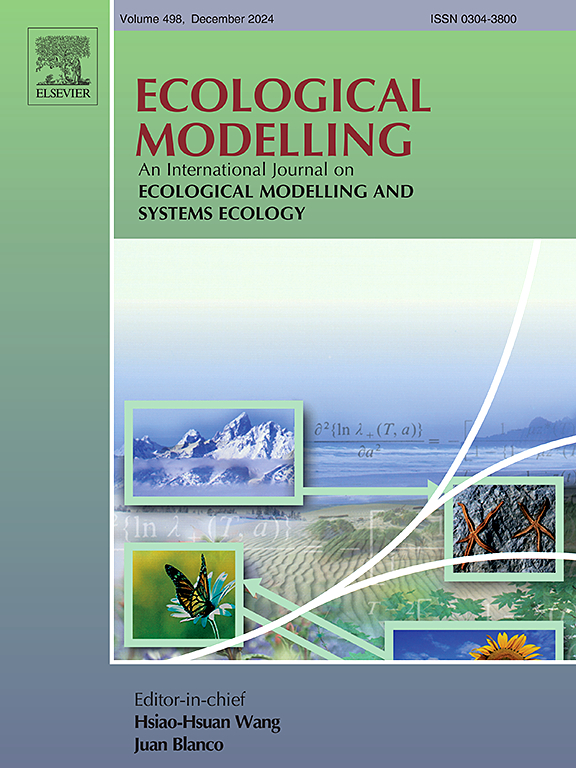A mathematical guidance on river water pollution management strategies using ordinary differential equations
IF 3.2
3区 环境科学与生态学
Q2 ECOLOGY
引用次数: 0
Abstract
Governments worldwide face increasing pressure to develop effective river pollution control strategies that meet environmental regulations, support sustainable socio-economic development, and protect public health. This study advances governmental strategy-making by developing two models using Ordinary Differential Equations. The Recovery Time Model estimates how long it takes for a polluted river to reach safe conditions under given inflow limits, helping governments set realistic treatment goals. The Antidegradation Model computes maximum allowable inflow concentrations (Antidegradation Scalars, ) aligned with different regulatory objectives—improvement, maintenance, or controlled degradation—thereby guiding decisions that balance environmental and socio-economic priorities. To support practical implementation, we develop a user-friendly Python program that enables government officials to obtain the recovery time and the antidegradation scalars easily, thus promoting effective river water quality management strategies. While the models have not yet been deployed in real-world regulatory systems, the Hun River case study illustrates their potential to guide timely and balanced policy decisions. Future work involving collaboration with local governments could validate their long-term impacts on both environmental quality and economic planning.

常微分方程对河流水污染治理策略的数学指导
世界各国政府面临越来越大的压力,需要制定有效的河流污染控制战略,以符合环境法规,支持可持续的社会经济发展,并保护公众健康。本研究利用常微分方程建立两个模型,以促进政府决策。恢复时间模型估计在给定的流量限制下,受污染的河流需要多长时间才能达到安全水平,帮助政府制定现实的治理目标。反降解模型根据不同的监管目标(改善、维持或控制降解)计算最大允许流入浓度(反降解标量,ADS),从而指导平衡环境和社会经济优先事项的决策。为了支持实际实施,我们开发了一个用户友好的Python程序,使政府官员能够轻松获得恢复时间和抗退化标量,从而促进有效的河流水质管理策略。虽然这些模型尚未应用于现实世界的监管体系,但浑河的案例研究表明,它们有可能指导及时、平衡的政策决策。与地方政府合作的未来工作可以验证它们对环境质量和经济规划的长期影响。
本文章由计算机程序翻译,如有差异,请以英文原文为准。
求助全文
约1分钟内获得全文
求助全文
来源期刊

Ecological Modelling
环境科学-生态学
CiteScore
5.60
自引率
6.50%
发文量
259
审稿时长
69 days
期刊介绍:
The journal is concerned with the use of mathematical models and systems analysis for the description of ecological processes and for the sustainable management of resources. Human activity and well-being are dependent on and integrated with the functioning of ecosystems and the services they provide. We aim to understand these basic ecosystem functions using mathematical and conceptual modelling, systems analysis, thermodynamics, computer simulations, and ecological theory. This leads to a preference for process-based models embedded in theory with explicit causative agents as opposed to strictly statistical or correlative descriptions. These modelling methods can be applied to a wide spectrum of issues ranging from basic ecology to human ecology to socio-ecological systems. The journal welcomes research articles, short communications, review articles, letters to the editor, book reviews, and other communications. The journal also supports the activities of the [International Society of Ecological Modelling (ISEM)](http://www.isemna.org/).
 求助内容:
求助内容: 应助结果提醒方式:
应助结果提醒方式:


